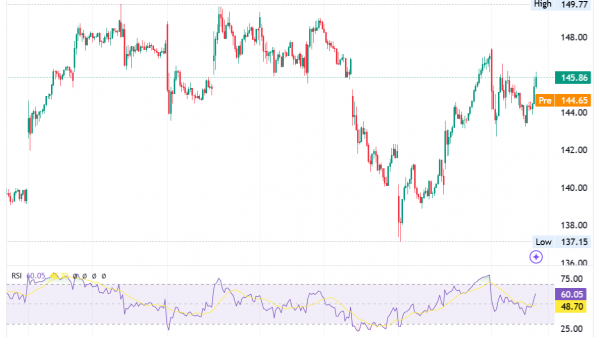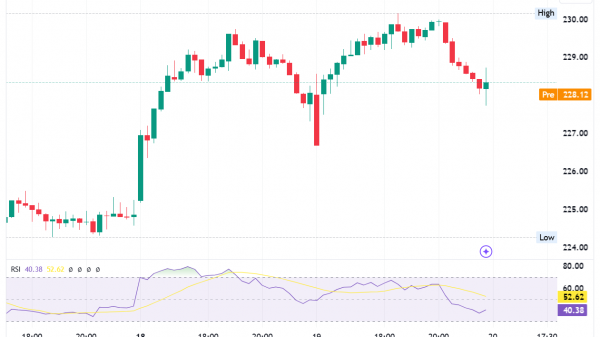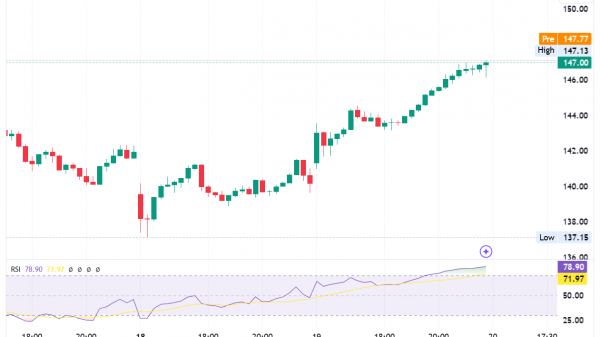Crafting the Perfect Trading Plan: A Template Guide
Creating a comprehensive trading plan is a crucial step for any trader looking to succeed in the financial markets. It is hard to overstate the importance of a trading plan template.
Key takeaways
A well-structured trading plan helps you stay disciplined and make informed decisions.
It is possible to reduce the risk thanks to a well-structured trading plan.
In this guide, we’ll outline the essential components of a trading plan that covers trading strategy, risk management, and more.
1. Define your trading strategy:
Start by choosing a trading strategy that suits your personality and goals. Common strategies include day trading, swing trading, and long-term investing.
Describe your chosen strategy in detail, including the indicators, tools, and methodologies you’ll use for analysis. Outline the specific criteria for entering and exiting trades based on your strategy.
2. Set clear goals and objectives:
Define your financial goals, such as profit targets and annual returns.
Determine the timeframe for achieving your goals, whether short-term or long-term.
Establish realistic expectations, considering the risk involved in trading.
3. Risk management:
Risk management is a critical component of any trading plan.
Specify the maximum percentage of your capital you are willing to risk on a single trade.
Set a stop-loss level for each trade to limit potential losses.
Determine the maximum drawdown you can tolerate before reassessing your trading plan.
Establish position-sizing rules based on your risk tolerance and account size.
4. Asset selection:
Decide which financial instruments you will trade, such as stocks, forex pairs, commodities, or cryptocurrencies.
Consider the liquidity, volatility, and trading hours of the chosen assets.
Diversify your portfolio to reduce risk by trading different asset classes.
Traders and trading plan template
It is important not to forget about other important details when it comes to a trading plan template. So, let’s continue!
5. Entry and exit criteria:
Specify the conditions that must be met for entering a trade, including technical and/or fundamental factors.
Define your exit strategy, which could involve taking profit at a predetermined level or stopping out with a set stop-loss order.
6. Trading rules and guidelines:
Establish a set of trading rules that you will follow consistently.
Include guidelines for managing open positions, handling news events, and avoiding impulsive decisions.
7. Record keeping:
Maintain a detailed trading journal to track all your trades.
Record the date, time, entry/exit prices, position size, reasons for entering the trade, and any additional notes.
Analyze your trading journal regularly to identify strengths and weaknesses in your strategy.
8. Backtesting and analysis:
Backtest your trading strategy using historical data to evaluate its performance.
Conduct thorough analysis to identify patterns or areas for improvement.
Make adjustments to your strategy based on your findings.
9. Continuous learning and improvement:
Commit to ongoing education and improvement as a trader. Stay updated with market news and developments.
Review and adapt your trading plan as needed to stay aligned with changing market conditions.
10. Psychological preparation:
Recognize the importance of emotional discipline in trading.
Develop strategies to manage stress, fear, and greed.
Consider setting daily or weekly trading limits to prevent overtrading.
11. Contingency plans:
Prepare for unexpected events and market volatility.
Have a plan in place for handling margin calls or catastrophic losses.
Consider having a backup source of income to support your trading activities.
12. Review and evaluation:
Schedule regular reviews of your trading plan to assess its effectiveness.
It is desirable to make adjustments based on your performance and changing market conditions.
Trading strategies
It is all but impossible to imagine a good trading plan without a good trading strategy.
Trading strategies are systematic approaches used by traders to make informed decisions about buying or selling financial assets in various markets, including stocks, forex, commodities, cryptocurrencies, and more.
These strategies are designed to exploit market inefficiencies, identify opportunities, and manage risk effectively. Here are some common trading strategies used by traders:
1. Trend following:
This strategy aims to capitalize on the continuation of existing market trends.
Traders use technical indicators such as moving averages or trendlines to identify the direction of the trend.
2. Swing trading:
Swing traders aim to profit from short to medium-term price swings or “swings” in the market.
They use technical analysis to identify potential entry and exit points within a trend. Swing traders typically hold positions for a few days to a few weeks.
3. Day trading:
Day traders open and close positions within the same trading day, aiming to profit from intraday price movements.
They use technical analysis, chart patterns, and real-time data to make quick decisions.
Day trading requires a high level of attention and discipline.
4. Scalping:
Scalpers aim to profit from tiny price fluctuations within seconds or minutes.
They make numerous small trades throughout the day, relying on quick executions and tight spreads. Scalping requires advanced technical analysis skills and a robust trading platform.
5. Range trading:
Range traders identify trading ranges or price consolidation periods and buy near support levels, and sell near resistance levels.
Also, Range traders aim to profit from price oscillations within a defined range. This strategy is suitable when markets lack a clear trend.
Trading strategies that you need to know (part two)
6. Breakout trading:
Breakout traders look for significant price breakouts above resistance or below support levels.
They anticipate that the breakout will lead to a strong trend and position themselves accordingly.
Effective risk management is crucial, as breakouts can lead to false signals.
7. Contrarian trading:
Contrarian traders go against prevailing market sentiment and trends. They buy when the market is bearish and sell when it is overly bullish.
Contrarian trading is based on the belief that market sentiment can become excessively optimistic or pessimistic.
8. Fundamental analysis:
Fundamental traders focus on analyzing the financial health, news, and economic factors affecting an asset.
They make trading decisions based on the perceived intrinsic value of the asset.
Fundamental analysis is common in stock and forex markets.
9. Event-driven trading:
Event-driven traders capitalize on specific events like earnings reports, economic announcements, or corporate news.
They anticipate price movements triggered by these events and take positions accordingly.
Event-driven trading requires quick reactions to news and information.
10. Algorithmic and quantitative trading:
Algorithmic traders use computer programs and mathematical models to execute trades automatically based on predefined criteria.
Quantitative traders rely on statistical analysis and quantitative research to develop trading strategies.
Successful traders combine elements of technical analysis, fundamental analysis, and risk management to create a robust trading plan that suits their individual needs and goals. It is crucial to thoroughly test and refine any chosen strategy before committing real capital.
In conclusion, a well-structured trading plan is essential for success in the financial markets. It provides a framework for consistent decision-making, risk management, and ongoing improvement as a trader.
A well-prepared trader is better equipped to navigate the challenges of the market and increase their chances of long-term success.
The post Crafting the Perfect Trading Plan: A Template Guide appeared first on FinanceBrokerage.

































